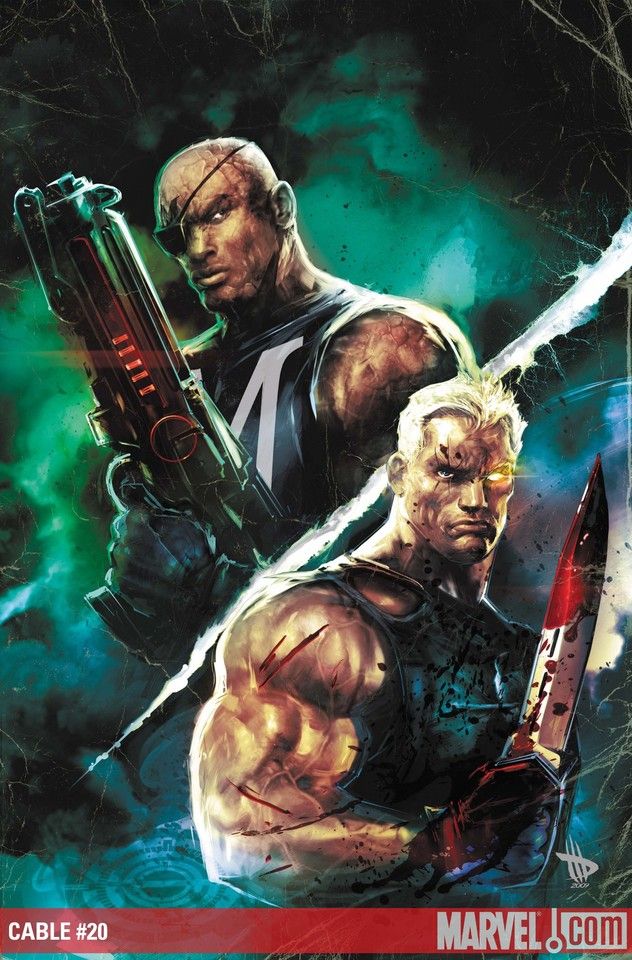The current series of Cable got off to a strong start, with a solid premise that was being decisively played out as Cable took the infant "messiah child" Hope to the future to protect her, and Bishop -- a man determined to stop her --- pursued. The problem is that 20 issues later, we're still doing that story. Hope is a little older, but by and large, that's as far as it's got.
Unfortunately, the format has gone well beyond stale and is well on its way to becoming petrified. It would be far easier to accept, though, were we not painfully aware that the series is largely killing time until the arrival of a crossover ("Second Coming") that, by all accounts, it won't actually be participating in. At least, not in a direct way. The question of what Cable and Hope have been doing since their departure from the present in "Messiah Complex" has never felt more like it could be served, just as entertainingly and far more succinctly, by a few panels of flashback.
This issue exemplifies the problems with the series. Eli, the closest thing the series has to a secondary cast member, is shuffled away once it becomes clear he can't follow the main characters into their next storyline. The villains, save Bishop, are generic and uninteresting. There's a plodding inevitability to the events of the issue, and although for one brief moment it looks like things might change, the issue once again concludes with Bishop pursuing Hope and Cable.
In fairness, taken in isolation the issues represent adequately entertaining installments of their story, and any problems are all about the sheer number of times we've seen the same plot play out. This issue, there's a nice inventive climax to events, as Bishop hijacks an Acanti through sheer force of will, but as a twist, it's only mildly less interesting than the notion that Bishop might actually fail definitively. Inventive plot mechanics aren't enough to prevent you from feeling like you've read this before.
The art, by Gabriel Guzman, is reasonably serviceable. The storytelling fundamentals work fine, but the rendering is variable -- some panels look great, others less so. It doesn't help that the locations are hard to make particularly interesting, and the Brood are so familiar and generic that even the best would struggle to turn a memorable image out of the story. The art mirrors the writing, which mirrors the plight of the title itself. There's nothing particularly bad, but it's all just a little too samey, and ultimately, unremarkable.

